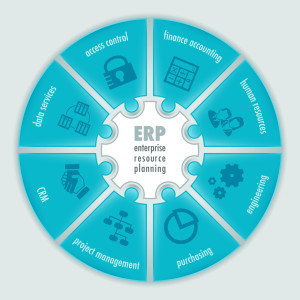 How confident are you in your ability to utilize your data collection technology properly and effectively? How many times do you second-guess the data you’re receiving? How often are you asking your IT team to double-check if the business intelligence program that you’re using is accurately displaying the right statistics?
How confident are you in your ability to utilize your data collection technology properly and effectively? How many times do you second-guess the data you’re receiving? How often are you asking your IT team to double-check if the business intelligence program that you’re using is accurately displaying the right statistics?
In short, you shouldn’t doubt your BI solution — after all, it is called a solution. And it’s not uncommon for business owners or the decision-makers beneath the executive level to have trouble making sense of all the charts and graphs that are intended to make your life simpler, but perhaps may even complicate things further.
To improve the use of your data collection strategy, we’ve outlined some of the most common habits that hinder your data analysis efforts and ultimately your overall productivity.
Oversimplified Data
This habit changes frequently given the constantly evolving innovations of the industry. Think of it like the story of Goldilocks and the Three Bears – you want to find the perfect medium that’s not too simple, but also not too complex to comprehend where the data is practically rendered useless.
With technological advancements comes the ability to make the complex digestible and easier to understand. Your BI solution should be able to tackle your more complicated requests. As a decision maker, you are likely aware of when you should take a step back with your add-ons and when you should push forward with new technology to get the desired data you need to make more sound business choices.
The Cloud Isn’t Necessarily Your Solution
 Although the industry’s latest technology may appear extremely appealing and like the answer to all of your internal data collection issues, it’s likely not the solution you’re looking for. Unless you’re satisfied with your business intelligence tool at the moment, except for the fact that you can’t access it 24/7/365, switching over to cloud technology will likely not revolutionize the way you collect your data.
Although the industry’s latest technology may appear extremely appealing and like the answer to all of your internal data collection issues, it’s likely not the solution you’re looking for. Unless you’re satisfied with your business intelligence tool at the moment, except for the fact that you can’t access it 24/7/365, switching over to cloud technology will likely not revolutionize the way you collect your data.
The key point to focus on should be its effectiveness and usefulness. Before making a major change, ask yourself: does it deliver the results that you want it to? If the issue is convenience rather than efficacy, then perhaps moving your data to the cloud is the right move. Otherwise, try to gain a better understanding of your strategies, how your system works, the data you want displayed and the best way to achieve these goals.
Using Impractical Business Value
Once you input all of your necessary statistics – sales, inventory, exports, etc. — that may not be all you need to do to achieve your business goals. Sometimes the business intelligence tools that you use do a good job of collecting or displaying your data, but don’t necessarily perform well when it comes to providing you practical, business information.
We value our devices for their ability to give us objective data and the same goes for data collection tools. However, there are some important business intricacies that data generated from a computer can’t display. As a caution, don’t assume that extracting information from your BI solution is the only way way you can interpret your data. Instead, take some time to analyze the statistics and see if there are some risks, limitations or transactions that aren’t accounted for — and be sure to include them before you make any major decision.
In summary, don’t be afraid to use trial-and-error in your search of finding the optimum business intelligence solution. In fact, should you need assistance in finding or adding to a data collection tool that fulfills your needs, contact one of our representatives today for all your BI needs!


 In the industry of big data, there are many moving parts that are working together to provide businesses with an easier method to track their company operations. As we get deeper into the culture of interconnectivity, the value of having readable, statistical data rises to the top of an executive’s needs.
In the industry of big data, there are many moving parts that are working together to provide businesses with an easier method to track their company operations. As we get deeper into the culture of interconnectivity, the value of having readable, statistical data rises to the top of an executive’s needs.


 Your business intelligence solution’s main responsibility is to provide you with convenient, efficient and accessible data that allows you to make confident business choices as a result. Does yours fill those needs?
Your business intelligence solution’s main responsibility is to provide you with convenient, efficient and accessible data that allows you to make confident business choices as a result. Does yours fill those needs? How confident are you in your current data gathering methods? Is it taking longer for your team to interpret your data because you have tricky graphs, charts and projections? When was the last time you considered replacing your enterprise resource planning (ERP) software?
How confident are you in your current data gathering methods? Is it taking longer for your team to interpret your data because you have tricky graphs, charts and projections? When was the last time you considered replacing your enterprise resource planning (ERP) software?